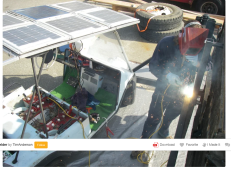Hey guys - not a solar question on this one - lifepo4 specific Q.
Have a 50aH battery. Using for a trolling motor (max draw 45A per spec FWIW).
Was charging with a NICO 5A charger ..... but only ever got to 13.2A before cutoff seemed undercharged.
Switched to a heagstat 2A
Charged for 48 hours straight but never cutoff and went into float/maintenance mode. Battery did get to 13.8.V after 2 hours settled.
Then went fishing ...... and this is what happened.
Im confused as I thought
1) The BMS would prevent over discharge (i.e not allow more than the rated 50A out)
2) 50A wouldnt be enough to do this at 12v.
thoughts ?
Have a 50aH battery. Using for a trolling motor (max draw 45A per spec FWIW).
Was charging with a NICO 5A charger ..... but only ever got to 13.2A before cutoff seemed undercharged.
Switched to a heagstat 2A
Charged for 48 hours straight but never cutoff and went into float/maintenance mode. Battery did get to 13.8.V after 2 hours settled.
Then went fishing ...... and this is what happened.
Im confused as I thought
1) The BMS would prevent over discharge (i.e not allow more than the rated 50A out)
2) 50A wouldnt be enough to do this at 12v.
thoughts ?




